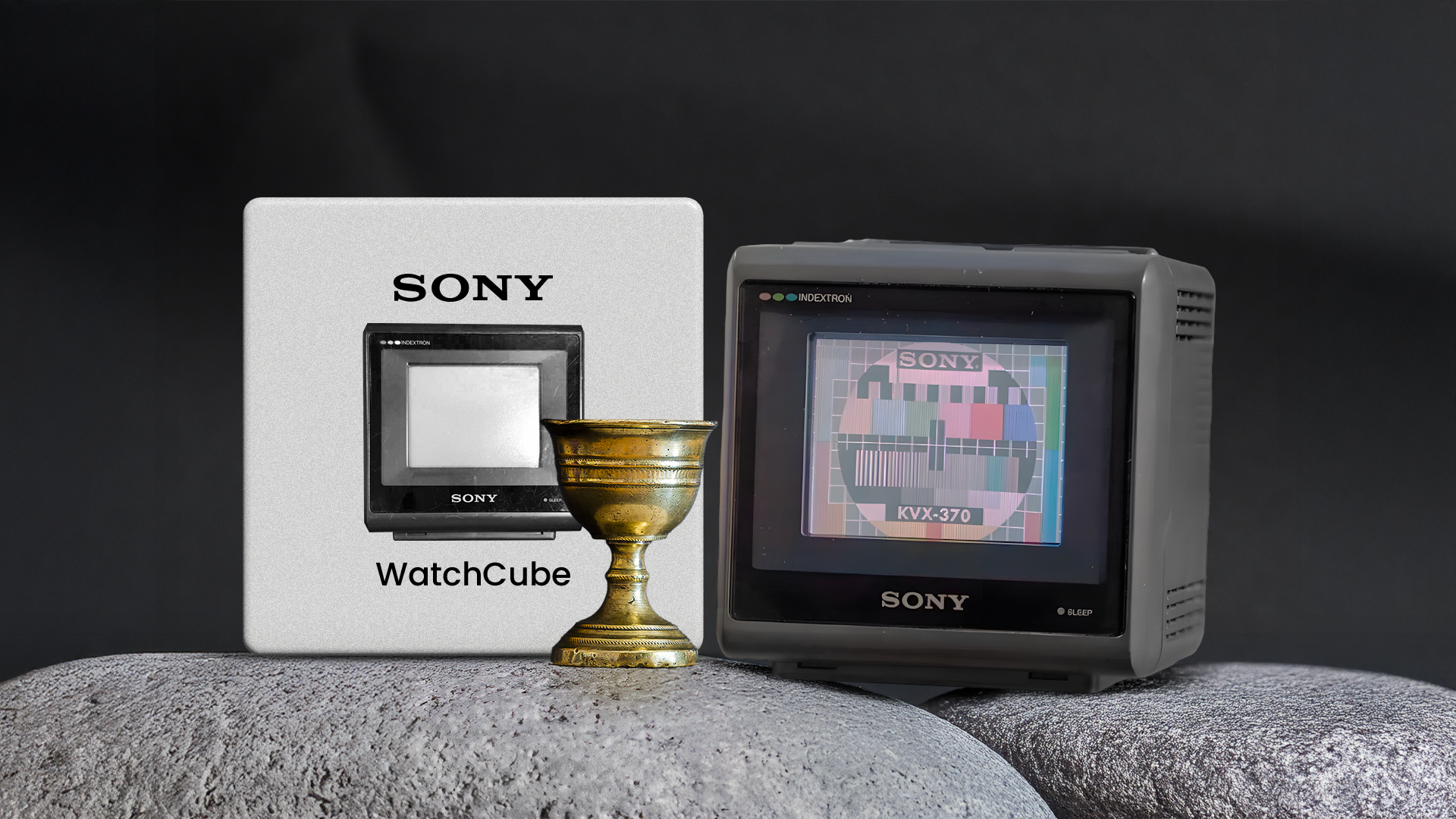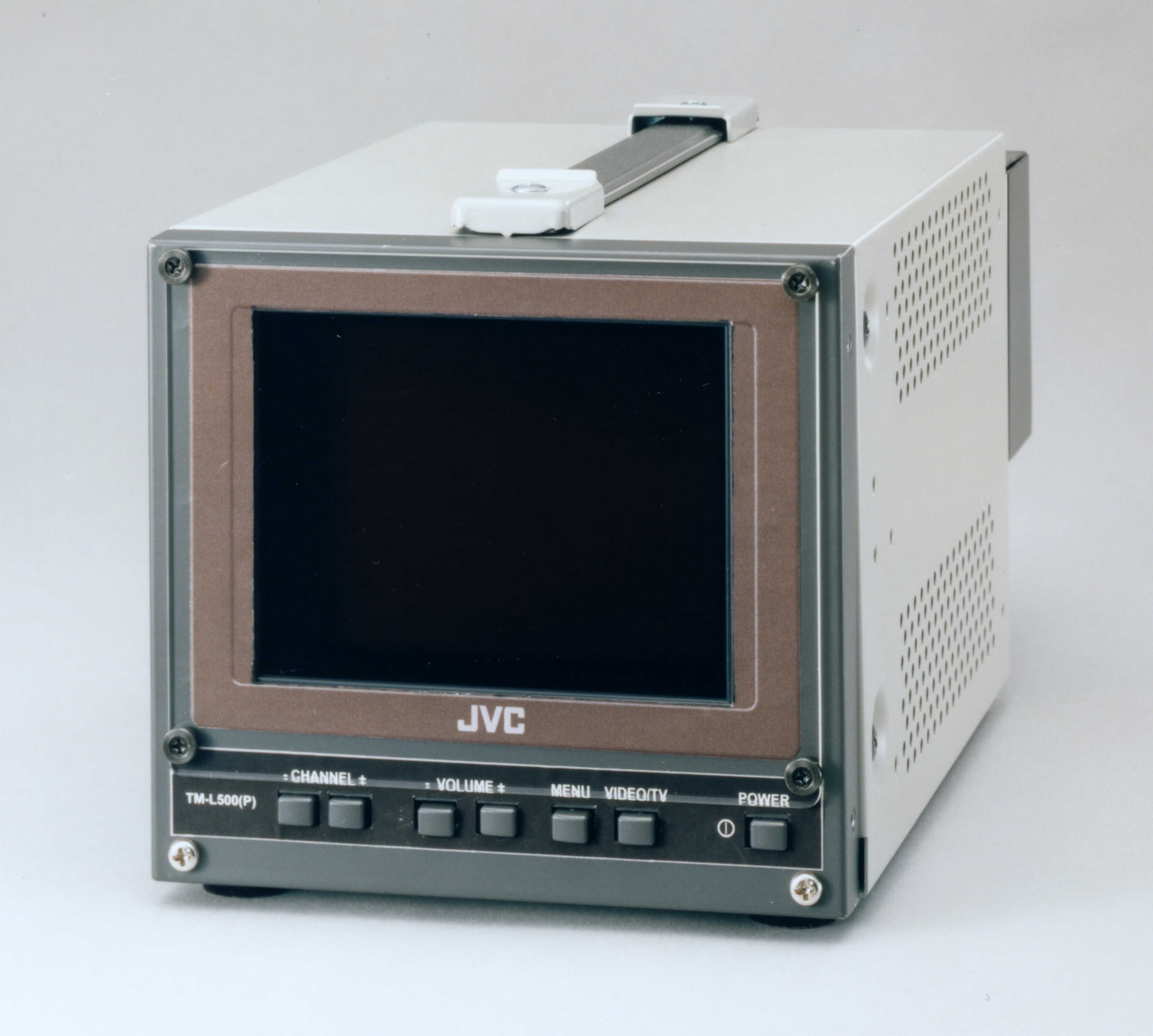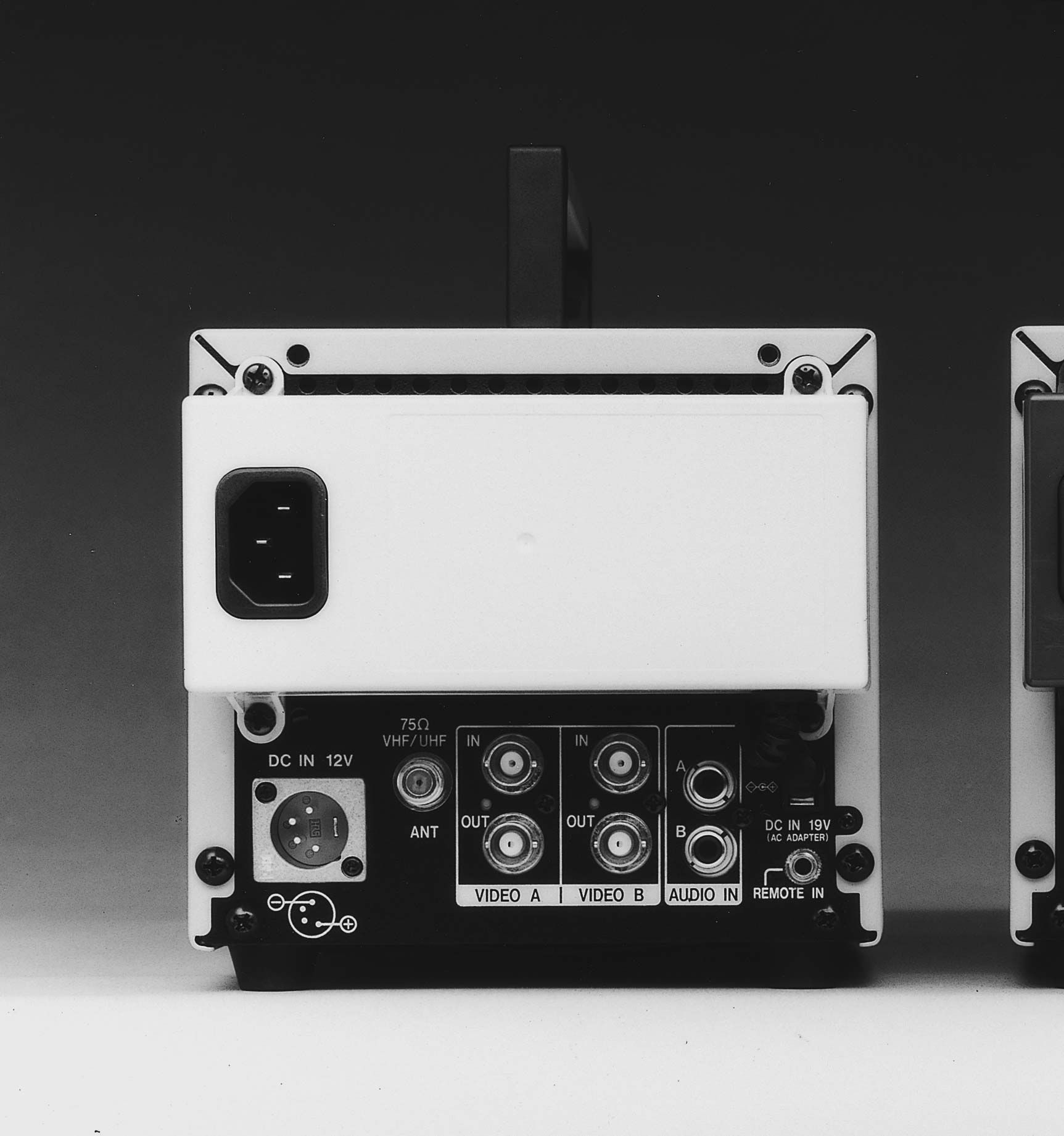In a standard color CRT monitor, three electron beams each excite phosphors for the three primary additive colors: red, green, and blue. In black and white CRTs, there’s just a single electron beam, which makes for a much simpler device.
So what if you could get color from a simple monochrome CRT? That’s exactly what JVC thought, and by combining both liquid crystal and CRT technology, the company actually pulled this off—once.
Small CRTs Made Color Hard
While color CRT televisions became common in the 1960s and 70s, shrinking that technology down to portable sizes introduced all kinds of headaches. Color CRTs use either a shadow mask or aperture grille to control electron beams, aligning them with red, green, and blue phosphor dots on the screen. But that physical precision gets more difficult the smaller you go.
The finer the mask, the more energy you lose in beam deflection and dispersion. As CRTs got smaller, this translated into dim, fuzzy, and expensive displays—not ideal for portable gear. Meanwhile, monochrome CRTs could be made smaller, brighter, and more rugged, making them popular for security monitors, camcorders, and even handheld televisions well into the 1990s. It feels like there should be some middle ground, right?
So how do you get color in a small, cheap CRT? You cheat.
Several Interesting Approaches Were Invented
To solve the color-in-small-CRTs puzzle, engineers explored weird territory. Field-sequential color was one such path. Instead of using different phosphors, you’d rapidly cycle red, green, and blue filters in front of a fast-refreshing monochrome CRT. As long as you synced the video source with the spinning filter wheel, your brain would blend the sequence into full color. CBS-Columbia had hoped this mechanical television design would become the color TV standard, but it quickly failed and barely any of the initial sets were sold.
Another approach was beam-indexing, which used a single electron beam and special sensors to dynamically steer it toward the correct phosphor stripes. It reduced the complexity of the gun but required precise timing and rarely delivered great results. This is the approach used by the tiny Sony Indextron color CRTs, which I’ve long considered a holy grail item for my own collection of TVs, but I don’t think they were really sold in my country, so the odds are small of me running across one—or affording it if I do!
JVC decided to split the difference between this mechanical and all-electronic approach to making a color CRT. They’d keep the fast-refreshing monochrome CRT but swap the mechanical color wheel for something more modern: a tiny, transparent liquid crystal shutter.
JVC Combined Liquid Crystal and CRT Technology to Make an Amazing Color CRT
It’s called the JVC TM-L450TU. A 4.5 inch color monitor meant for professional video production. The sort of thing you’d see in a control room for a broadcaster, for example. There’d be banks with dozens of these guys so that you could see live feeds from multiple cameras or other sources, ready to be mixed in real time.
The thing is, with solutions like the Sony Indextron tubes, there was an image quality sacrifice. For a professional monitor you can’t really have that, so to have a small CRT like this and still maintain great picture quality, JVC leaned on tried-and-tested monochrome CRT technology. To ensure a crisp and bright image. The genius of the design was the LCCS or Liquid Color Crystal Shutter.
Remember, that all an LCD does is filter light from some sort of backlight source. So the LCCS system effectively used the monochrome CRT as a backlight, but also as the image itself. The LC panel, on the other hand, wouldn’t display an image at all. It simply switched between each of the primary colors using special polarized color filters, changing the entire image to red, green, or blue. The shutter would cycle the colors in thirds across the panel, following the path of the electron beam. Technology Connections (one of my favorite channels) has a great video on the JVC LCCS, where you can see it taken apart and the color shutter do its thing.
The monitor draws the red, green, and blue components of each frame separately, synced with the shutter. Then, your eyes blend it all together in a single, seamless color image. If you remove the shutter, you just see a regular black and white image on the CRT, but as you move the shutter over the screen, it magically becomes a full-color image.
There are numerous benefits to this technology, not least of which is the increased sharpness you get from using a single-beam monochrome CRT at this tiny tube size. There’s no struggle with an impossible fine shadow mask or aperture grill. The image is also much brighter than would otherwise be possible, which meant it has comparatively excellent sunlight readability. That’s pretty important when a lot of the stuff you need to cover in your broadcast happens outside.
In Another Universe, This Could Have Been the Best of Both Worlds.
JVC didn’t invent either the idea or the technology behind the LCCS. After all, it’s basically another take on the CBS color wheel, and a company called Tektronix patented a similar shutter system for its oscilloscopes in 1983. However, the real genius here is in the image processing and electronic wizardry needed to convert a video signal into what the LCCS needs to work correctly.
JVC released this monitor in the year 2000, and realistically it wouldn’t have been possible before then. It’s one thing to provide color to an oscilloscope readout, and a whole different ballgame to do it for a full-color NTSC signal.
JVC basically did this only the one time, and just like with normal CRTs scaling it up presents the same problems, where you’re limited to small screen sizes by the steep weight increase for bigger tubes.
We still like CRTs for certain aspects of how they display images, and even the best flat-panel displays aren’t better in every way yet. If an LCCS solution was practical for normal color TV earlier than the year 2000, and affordable to boot, we might have seen a high-definition version, or even more compact devices that make use of this technology. In some parallel universe, that might be exactly what happened.
In some ways, this general approach to making color pictures does still live on today. In particular, DLP projectors that use a single chip employ a spinning color wheel to pull the same trick, and some ‘4K” projectors use a similar persistence of vision method to draw a 4K image by rapidly cycling a single 1080p image.
This JVC monitor was expensive, had mediocre color, and might not have had much appeal outside a professional setting, but we only got to see one generation of this tech, and I still think it would have been cool to see someone refine it. Sadly, by the mid-2000s CRTs were clearly on the way out, so JVC was just too late to the game for the LCCS technology to have any lasting impact. Which does nothing to diminish just how gosh darn cool it all is.


